Have you ever wondered how the Australian Shepherd dog got its name?
It must be from the Land Down Under, right? Wrong!
It’s believed that this cowboy and rodeo dog was brought to the Wild West ranches of California by shepherds from the Basque region of the Spanish and French Pyrenees. But, they came via Australia, where they spent many years on the vast Australian ranches set up by British colonials. And, they bred their European herding dogs with British breeds such as the Border Collie.
Ranchers in the American West latched onto the fact that the shepherds had newly arrived from Australia, and so they mistakenly assumed that these amazing dogs were from there; hence, the name. But, the story doesn’t end there! The breed was developed over the decades by using herding dogs already present in the U.S., resulting in the amazing Aussie Shepherd we know and love today.
So, it’s really an American dog with European roots that arrived by way of the antipodes!
Still, this name has stayed with them since the late 1800s, and it’s not likely to change any time soon. Since being recognized by the American Kennel Club (AKC) in 1991, this beautiful and super-smart working dog has become extremely popular, reaching number 12 out of 200 in the AKC’s ranking. Not only are they great companions, but they also excel as police dogs, service dogs for the disabled, and search and rescue dogs.
An Aussie Shepherd’s coat colors are as mixed as its history, which is one of the reasons why they are loved so much. However, you don’t often see black Australian Shepherds.
Why is this? That’s what we’re here to find out! Along the way, we’ll answer some frequently asked questions about Aussie Shepherds and discover some fascinating facts about this wonderful breed.
All-Black Australian Shepherd

One question that people often ask is, can you get black Australian Shepherds?
Well, yes, you can.
Although, mostly, when people say that these dogs are black, they mean black bi or black tri; not solid black. They allude to the fact that most of the dog’s coat is black but with flashes of other colors, including white and brown (or tan).
Still, thanks to the curious way in which dog coat color genetics work, you can get solid black Aussies. These are sometimes referred to as self-colored dogs or even minimal bi-colored.
This means that they lack any white marking, and all their hairs are uniform in color. Most other dogs will have a variety of colors, sometimes spread in a definite pattern across the body, but often in random patches.
When you do come across a solid black Australian Shepherd, it’s a wonderful sight. It will have light or dark brown eyes, and it may even have hazel eyes with gold flecks! If you look at the coat closely, you might just see subtle differences in the shades of black around the chest and legs. This is where the hairs would have been a different color had the dog’s genes not interfered with the process!
Full Grown Black Australian Shepherd
We’ve not mentioned size yet, so let’s fix that right now!
We’re talking about the black Australian Shepherd in particular, but there’s no evidence to suggest that coat color affects a dog’s size, so this will apply to all Aussie Shepherds:
| Height at the withers (shoulder) | Weight | |
|---|---|---|
| Male | 21 to 23 inches | 50 to 65 pounds |
| Female | 18 to 20 inches | 40 to 55 pounds |
RELATED: Australian Shepherd Growth Chart
They are solid dogs of medium build, with a low center of gravity that increases their power and agility. As with most dog breeds, the females are smaller and lighter.
They’re not regarded as large dogs by any means, but their size is overshadowed by their speed, agility, smartness, and energy. And, that’s what you need to take into account when buying one!
If you want the same bundle of energy and intelligence in a smaller package, then take a look at the next section.
What Is The Difference Between A Border Collie And An Australian Shepherd?
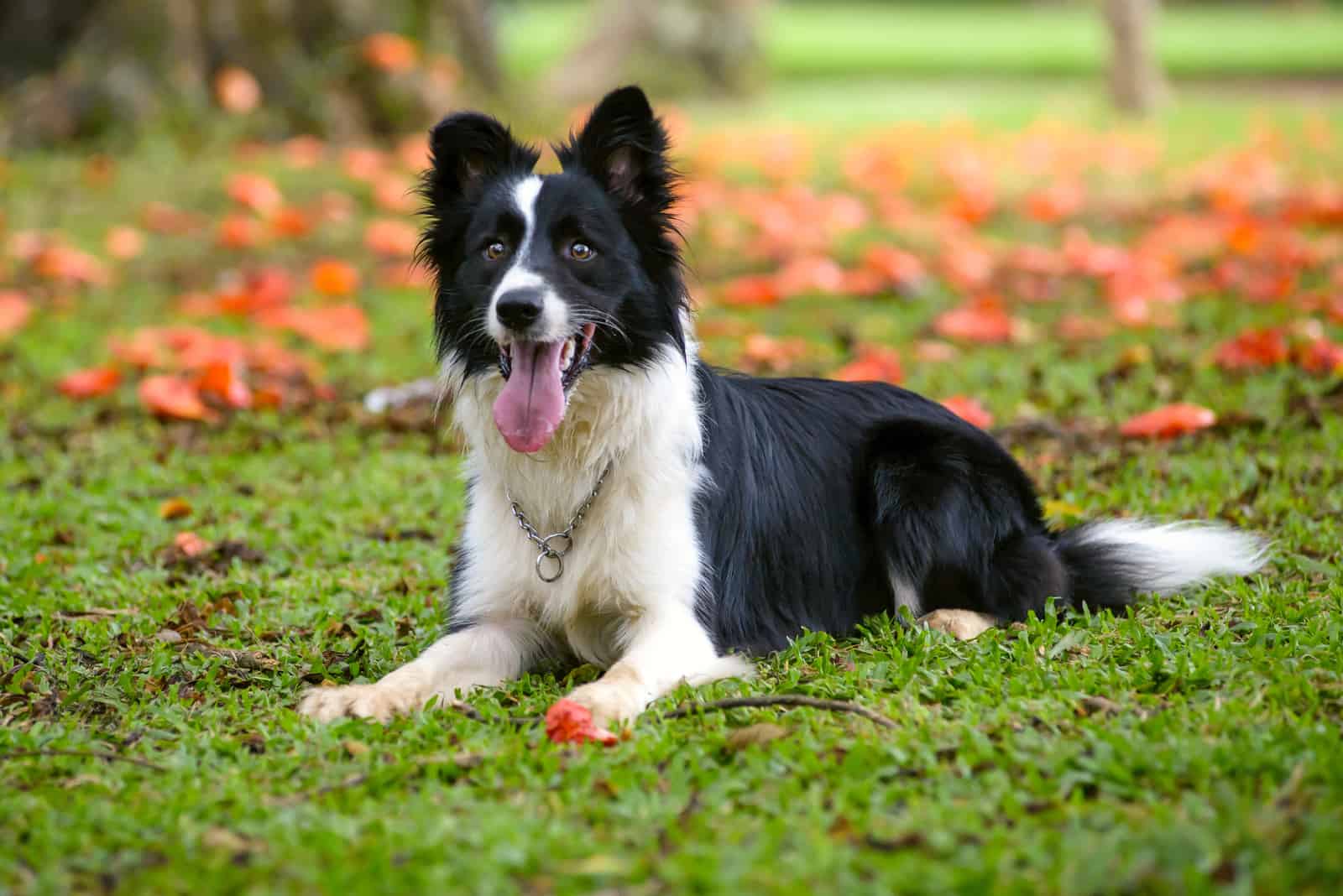
As you might expect, they are pretty similar because the Collie contributed to the making of the Aussie Shepherd. However, if you look closely, you can see some subtle differences.
Both are intelligent, high-energy breeds ideally suited to life as working dogs. They love being kept occupied, and they are in their element when given a job to do.
If you want to tell them apart, here’s what to look out for:
Eyes – A Border Collies’ eyes are mostly dark brown, while the Aussie Shepherd has bi-colored, brown, blue, or marbled eyes.
Coat – This is a tricky one as many Border Collies have a black and white coat, while Aussies have many different colors and combinations of markings. However, Collies can sometimes also have coats flecked with merle or sable patterns, making it difficult to tell them apart!
Ears – An Aussies’ ears are triangular in shape, and they tend to flop forward, while the Border Collies’ ears are more upright.
Weight – Both breeds range in height from between approximately 18 and 23 inches, but the Aussie Shepherd is usually heavier and more muscular and sporty, while the Border Collie is generally leaner and more compact.
Grooming – Your typical Border Collie will need brushing two or three times a week, whereas the Aussie can get away with just one good brush a week.
Temperament – The Aussie Shepherd is generally more laid back, although this a relative term when it comes to these hyperactive breeds! Both are very protective of family, and the Border Collie is usually the more affectionate of the two. They are also both seriously intelligent and need adequate mental stimulation.They also need socialization and training to stop any unwanted behavior, such as herding cats, kids, postal workers, etc.
Health – Both have a similar lifespan of between 12 and 15 years, and face similar health problems such as hip dysplasia, ear conditions, and eye conditions. The Aussie Shepherd is more prone to certain types of cancer.
The only other real differences stem from their time as herding dogs. The Border Collie is the more silent of the two and rarely barks to get its point across, but rather, it uses eye contact with livestock as a means of communication.
The Aussie uses its body rather than its eyes, and will bark at the flock to get them to move.
As a result, the Aussie is usually the more vocal of the two.
Mini Black Australian Shepherd
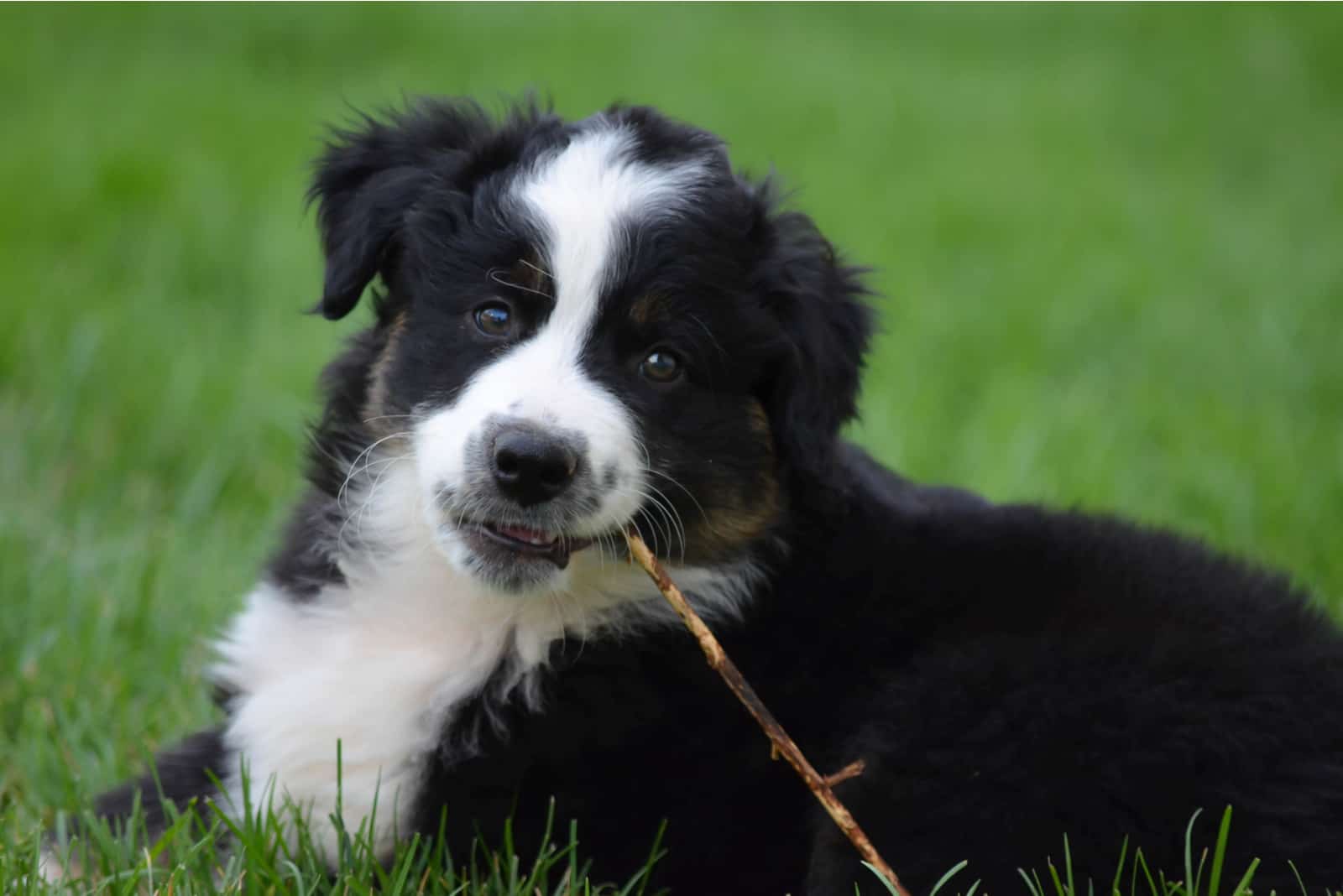
Technically, this name is wrong. Remember the short history lesson at the beginning about how Aussie Shepherds got their name?
Well, in the 1960s, a smaller version was developed, retaining all the admirable qualities of the full-sized dog, but more suited for dealing with small livestock. These tiny dogs became popular as household pets, and were unregistered as a breed. By 1983, they were so well-known and loved all across the U.S. that they were listed on the National Stock Dog Registry as the Miniature Australian Shepherd. Various rare breed clubs took them to heart, and the first parent breed club, the Miniature American Shepherd Club of the USA (MASCUSA) was formed in 1990.
Did you notice the name change? This little dog switched from Australian to American somewhere along the line!
So, how big is this little beauty?
Males measure between 14 and 18 inches at the shoulder, and weigh between 20 and 40 pounds. Females weigh around the same, but rarely as much as 40 pounds, and they stand between 13 and 17 inches at the shoulder.
Other than this, there should be no real difference in temperament or character, although you might find that this mini version is super affectionate with family and more accepting of other dogs.
Are Black Australian Shepherds Rare?
The completely black Australian Shepherd isn’t exactly rare, although you don’t see many around.
The solid black coat (in fact, any solid color in the Aussie Shepherd) is caused by a recessive gene, meaning that both parents must carry this gene if there is any chance of the pup having an all-black coat.
Black dogs are something of an enigma. They’ve had a rough ride when it comes to folklore and legend, often associated with doom, gloom, curses, and bad luck. They are cited as Hell Hounds and Devil Dogs, and in the world of film and TV, violently aggressive dogs almost always sport a glossy black coat.
Because of this, some people seem apprehensive about black dogs. This might be one reason why they are often overlooked in rescue centers and animal shelters, although some psychologists suggest that people are naturally drawn to brighter colored dogs, possibly subconsciously, as they believe that they are friendlier and happier. It may also be a simple case that light-colored dogs are easier to see, and therefore, are picked first.
Also, we can’t ignore the fact that the law of supply and demand plays a role here, too. If black Australian Shepherds were in demand, there would be more of them as breeders would seek to fill a gap in the market.
To avoid confusion, when you see the term black Australian Shepherd, it may well refer to black-tricolor, bicolor (black and white), black and tan, or solid black dogs!
Black Tri Australian Shepherd
Black tri-color Aussie Shepherds are sometimes called three-colored black Australian Shepherds. They are not solid black, and they usually have tan (sometimes called copper) and white markings on their head, chest, stomach, and legs.
Read Also: Spotted Dog Breeds: 30 Dogs With Remarkable Spots
Black tris are arguably the most common coat color because the genes that control these colors are dominant (not the full black coat, though, as we’ve seen above!).
It is a stunning combination, giving the dog the appearance of a small Bernese Mountain Dog. They will almost always have brown eyes, which can either be light or dark.
Dog coat color genetics is a fascinating and complex subject. Don’t worry… we won’t dive too deeply into this! Suffice to say that there are two pigments that determine the color of each dog’s coat: eumelanin and pheomelanin.
These pigments have default colors, with eumelanin responsible for black, and pheomelanin producing a red color. When two dogs breed, they each pass on genes to the pup, and each one either dilutes or intensifies the black or red colors, creating an amazing range of shades and patterns.
They do this by telling the melanocytes (cells in the hair follicles) what colors to produce and when. They can switch on and switch off at various times, which is why some hairs are two or three different colors, and they even tell the cells not to produce any color at all, which makes white hairs.
Black can be diluted to blue, brown, and pale brown, otherwise known as gray, liver, and isabella. The red pigment is usually diluted to yellow or gold (as seen in the Golden Retriever), and it also creates the deep red of the Irish Setter and all shades in between, including cream.
There, that wasn’t too scientific, was it?
Australian Shepherd Black And White
This dog is similar to the tri-color Aussie, but without the tan markings. It’s known as a black bicolor Australian Shepherd, or simply a black bi.
Now, you’re probably picturing something like a classic Border Collie, and that’s understandable, as many black and white Aussies do resemble them. However, they come in a remarkable range of different shades and patterns.
Even so, the AKC prefers these dogs to be predominantly black, with white markings on their neck, paws, and face.
What Is The Rarest Australian Shepherd Color?
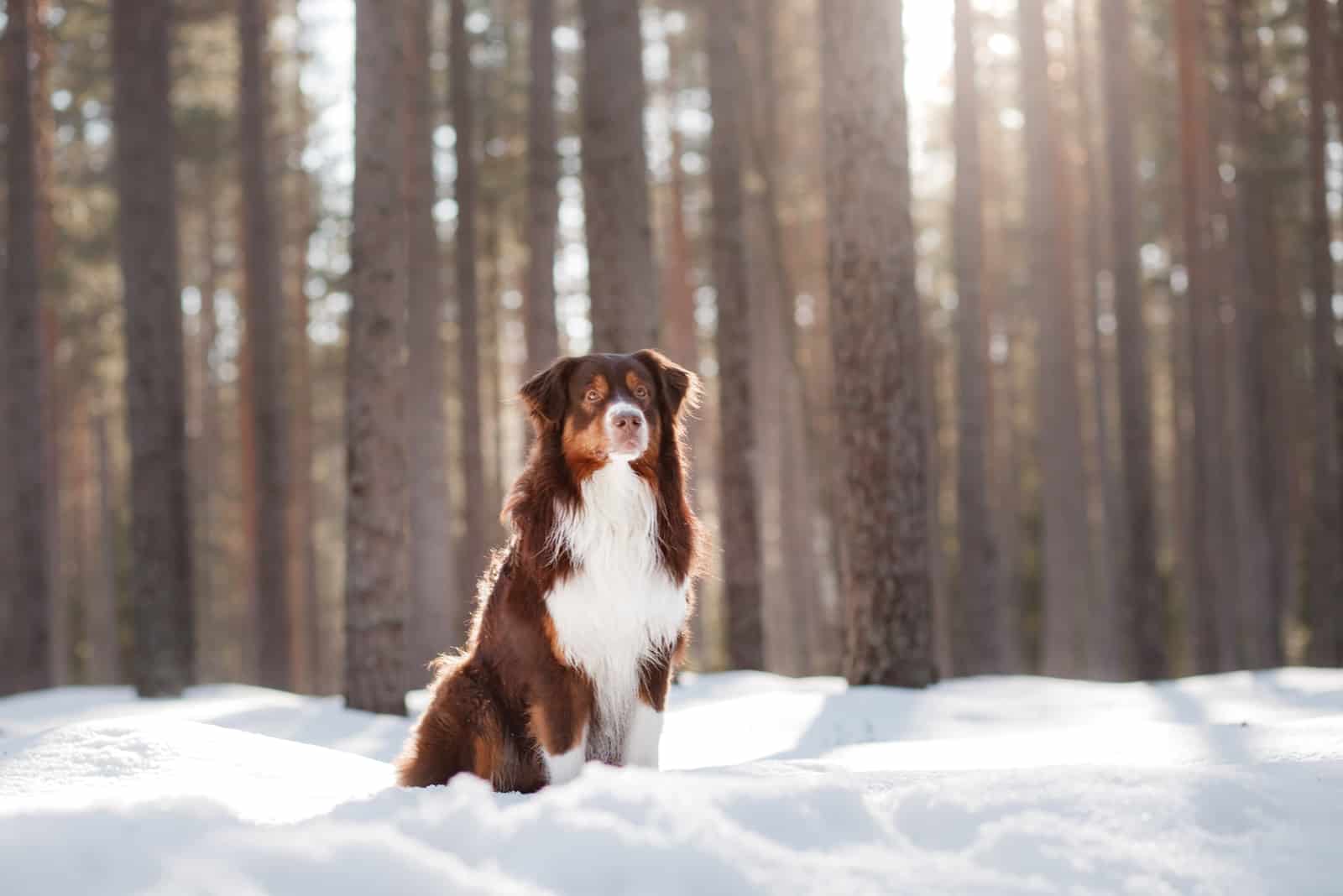
We’ve already mentioned the fact that black Aussies are uncommon, but the rarest color is either solid red or solid white, followed closely by red tri Aussies and then brown and white.
The red tri version is a variation of the black tricolor Aussie that we looked at earlier. Instead of black, it has a red base coat with a few white markings and copper highlights.
There are four accepted coat colors, according to groups such as the AKC, and these are black, blue merle, red, and red merle. They also list three standard markings: tan points, white markings, and a mix of both.
Although this allows for a real variety of colors, it doesn’t encompass the full spectrum of Aussie coat colors out there. A quick Google search will show that there are at least twenty variations of coat color, each with its own appeal.
Merle coats are a subject of debate and controversy, as the merle gene is thought to be responsible for certain genetic faults and inherited diseases. The Aussie Shepherd is one of the few breeds that the AKC accepts as having a merle coat.
Blue Merle Australian Shepherds and red Merle Australian Shepherds are popular with dog lovers across the U.S., with a range of color combinations that make them unique.
Thankfully, merle Aussies somehow seem to have avoided most of the nasty health problems faced by other breeds.
Black And Brown Australian Shepherds
Dog coat color names can be confusing! Is it tan or brown? Isabella or liver? Blue or gray?
Does it even matter?
Well, to reputable Aussie breeders and serious dog enthusiasts, yes. Remember we mentioned the two pigments: eumelanin, and pheomelanin? Well, the first one is responsible for brown (or liver), and the second produces tan.
You’ll find websites that describe some Aussie Shepherds as black and brown. You might find an identical dog on another website described as black and tan, like a German Shepherd. In fact, this last description is probably more accurate as the markings are similar to the trusty GSD.
This dog’s coat will be mostly black, with tan markings on the chest, neck, belly, and front of the legs. There may also be tan spots over the eyes, adding an extra touch of cuteness.
Do All Australian Shepherds Have Blue Eyes?
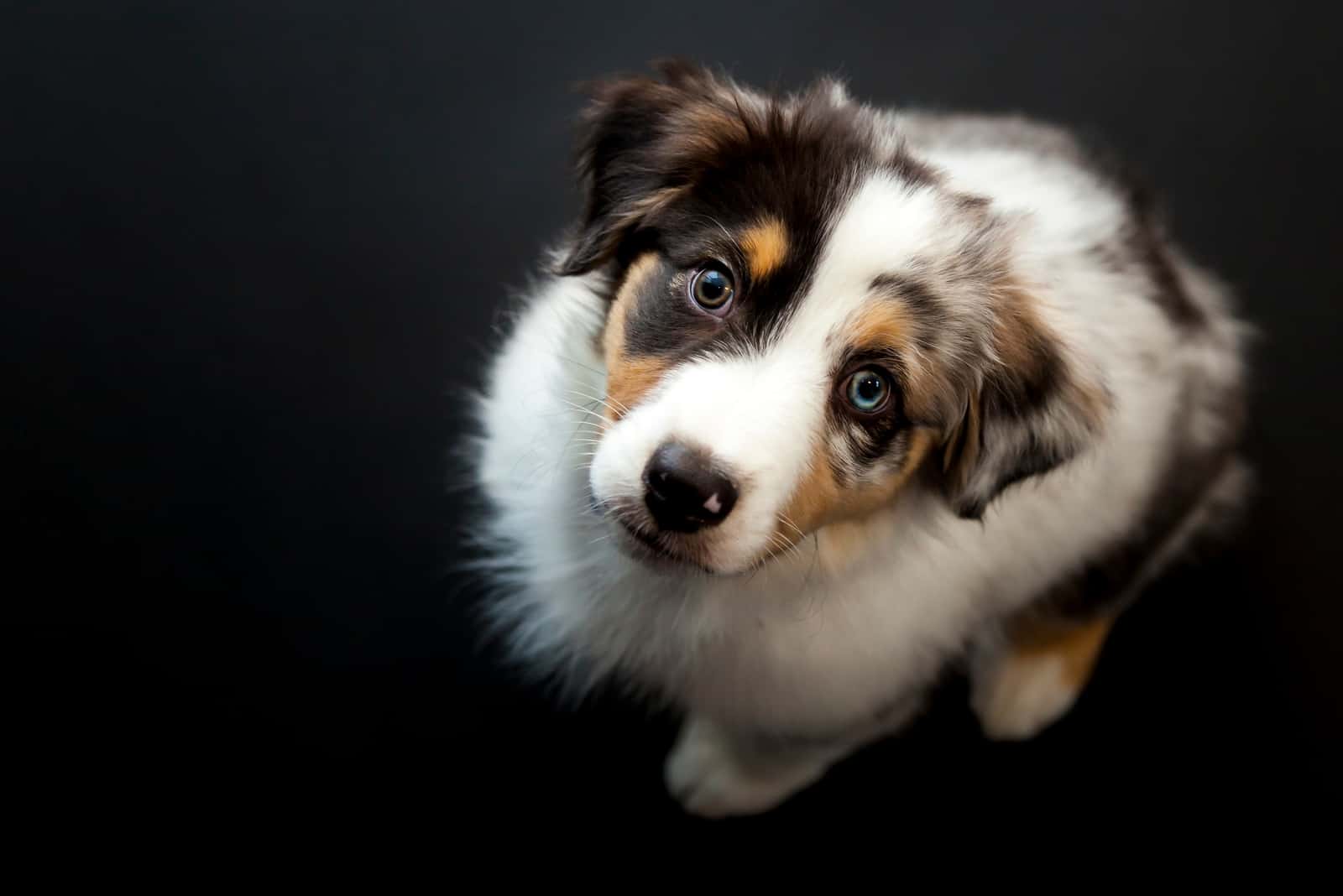
No. As we’ve already seen, some will have brown eyes, especially the black Australian Shepherd.
However, blue eyes are common, and sometimes they will have odd-colored eyes, with one blue and one brown… a condition known as heterochromia. When Native Americans first saw these unusual dogs, they thought of them as sacred, calling them ‘ghost eye.’
Aussies can even have split eyes, where one half of the iris is one color, and the other half is a different color!
A dog’s eye color is determined by melanin; one of the pigments that produce coat color. Genes affect the levels of pigment in the iris (the colored ring around the pupil) and this is what determines the color of the eyes. In some cases, the genes will tell the cells in the eye not to produce any color at all, which is why some Aussie Shepherds have blue eyes. They aren’t actually blue… it’s an optical illusion caused by a lack of melanin!
In extreme cases, there is a complete absence of melanin, known as albinism. True albinos are pure white, with red or pinkish eyes. They are often prone to serious health issues such as blindness and skin cancer.
In general, Aussies are healthy, and don’t suffer any ill effects from having blue or odd-colored eyes.
Speaking of health, let’s take a look at what problems we might expect to find in the Aussie Shepherd.
Black Australian Shepherd Health Problems
Again, these issues won’t only affect the black Australian Shepherd.
So, what health problems do they have?
Like many other breeds, hip dysplasia can affect them. This is a painful condition that’s caused by malformed hip joints. The ball and socket don’t fit properly together, making the bones rub together. This makes it uncomfortable to walk, and it often leads to arthritis later in life.
The same applies to elbow dysplasia; another painful joint condition. Both can be treated, but surgery is often required for severe cases.
Aussies are prone to eye problems, such as cataracts and progressive retinal atrophy (PRA); a degenerative condition that eventually leads to blindness.
This breed also suffers from vitamin B-12 malabsorption, leading to poor growth, blood problems, and weakness.
Finally, they can be sensitive to certain commonly used drugs.
Other than these, the Aussie Shepherd is a fairly healthy dog!
Black Australian Shepherd With Tail
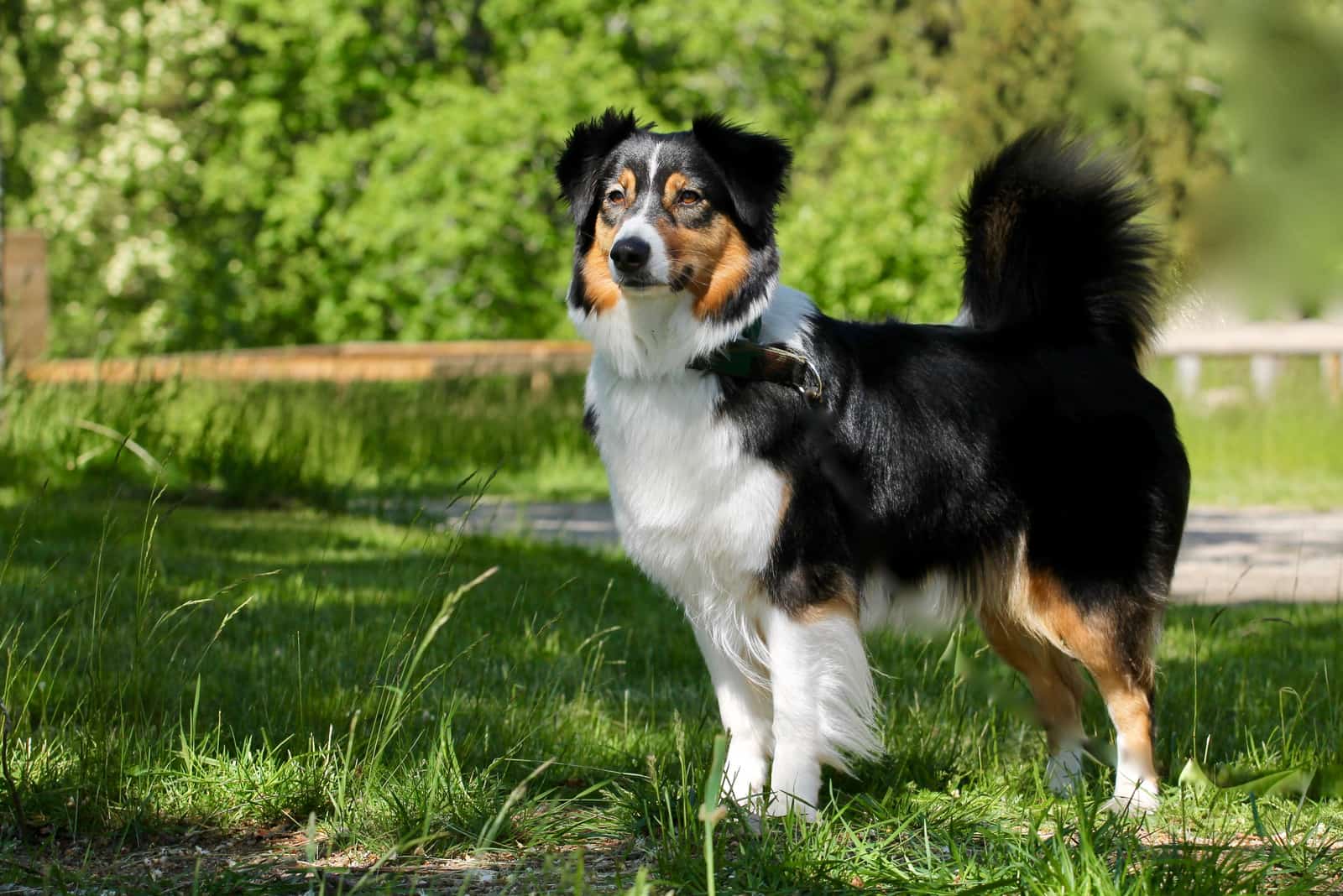
If you know Aussie Shepherds, you might have noticed that some have tails and others don’t. There are also those that seem to be somewhere in between.
So, what’s going on?
Well, many working dogs have their tails docked as some people believe that it can become a hazard. It’s considered too long, it can become matted, and it can be damaged by weeds or long grass, so the tail is cut off usually when they are puppies. Often, the tail is docked simply because breed standards recommend it for the look of the dog.
Tail docking has become a sore point (no pun intended!) as many countries have banned the practice, along with ear cropping and dewclaw removal, on the grounds that it is cruel and unnecessary.
It’s a debate that will continue for many years, but it is highly likely that these cosmetic procedures will be outlawed in the future. This seems a logical and natural course of action if we truly care about animal welfare.
What about those dogs that are in between? Those with what’s known as a bobtail?
These are dogs that are born without a tail or with a short stub of a tail because a couple of vertebrae are missing. About one in five Aussies are born this way. The sad fact about the bobtail gene is that it can be fatal: if a pup has two copies of this gene, there’s a good chance that it won’t survive.
Because of this, breeders avoid trying to produce naturally ‘docked’ pups, as it would limit the gene pool and result in thousands of fatalities.
So, docking is used instead. This involves cutting off the tail with scissors when the pup is a few days old. The process is often done without anesthesia or pain killers, and the blades cut through nerves, muscle, tendons, and cartilage. Alternatively, a rubber band is tied around the base of the tail to stop the blood supply until it drops off.
Recent research proves that far from the pups not feeling anything as their nervous system is not fully developed, they actually feel a greater intensity of pain as the neural pathways are not insulated. This allows the pain to register more quickly and to a greater degree than it would if they were older.
Little wonder that it’s been banned in forward-thinking countries!
Is An Australian Shepherd A Good Family Dog?
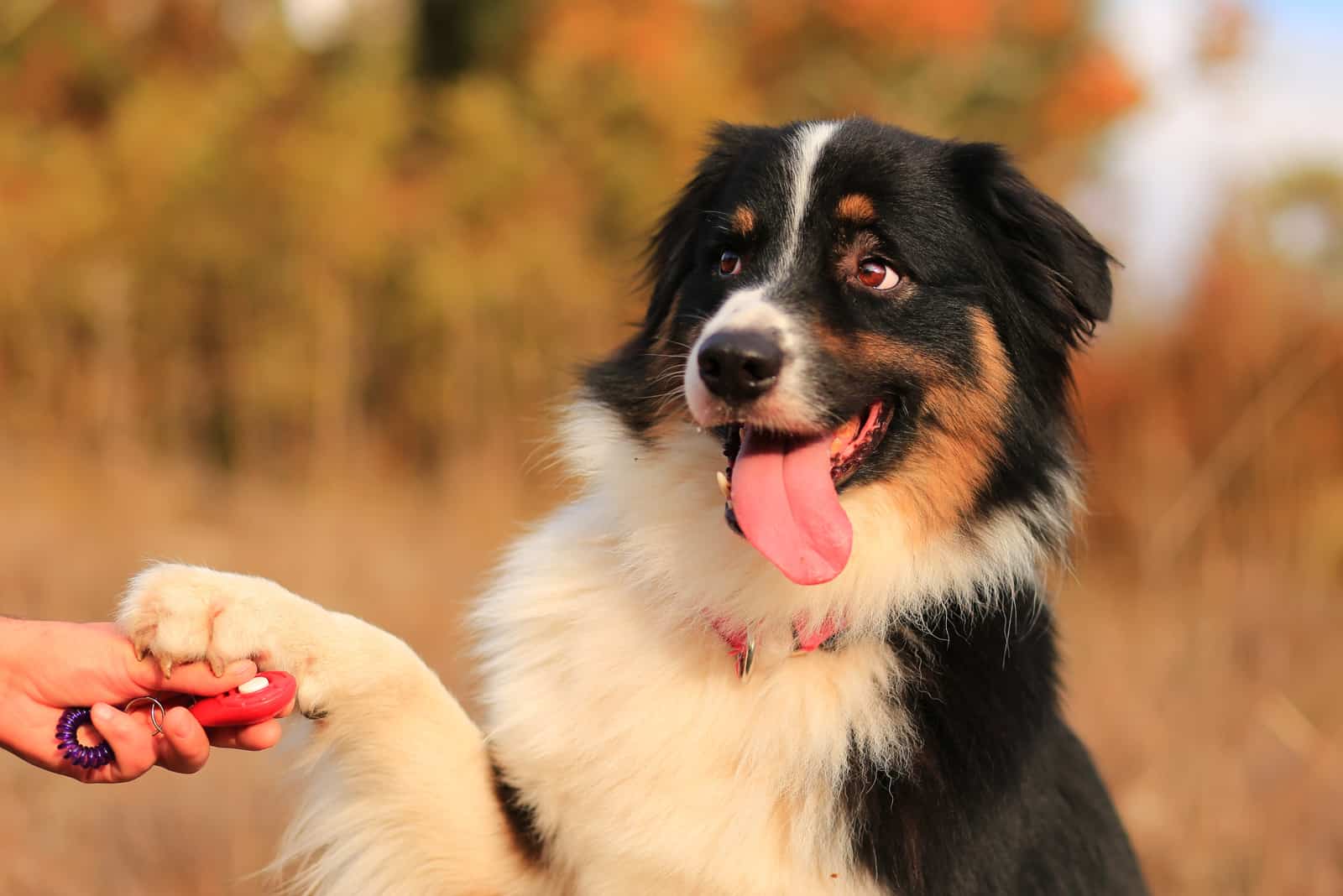
Yes! The Aussie Shepherd is an amazing dog. It is hard-working, affectionate, (mostly) easy to train, great with young kids, and seriously intelligent.
As usual, there are conditions attached…
The best way to approach this is to ask, is my family right for this dog? rather than, is this the right dog for us?
Even though they are generally laid back, they can sometimes be demanding, and they need you to lead. You must assert yourself as the pack leader and maintain that position, or this dog will have ideas above its station! This is a high-energy dog that needs a lot of exercise and mental stimulation. They thrive when you give them a job to do, so an outdoor country lifestyle suits them best. That’s not to say that they won’t do well in a town or in a city, but you’ll have to ensure that they get the exercise they need.
Without adequate mental stimulation and exercise, the Aussie Shepherd may become destructive or even aggressive. It would be a better match for a family that has experience with dogs. Proper training and socialization are a must, as this dog has a strong will and deeply ingrained instincts. There may be a tendency in some dogs to chase small pets or round up and nip animals or kids.
Did you notice the ‘mostly’ back at the start of this section relating to training? Smart dogs catch on quickly, but because they are so intelligent, they sometimes like to do things their own way. It’s essential to start training them early, but even so, you might struggle to keep their attention when you first begin.
However, with a little patience and perseverance, you’ll soon have them well trained. Positive reinforcement works really well, as they are highly motivated by praise and treats!
These dogs aren’t considered aggressive, although they are protective of family (especially children). They can be vocal, and they will always alert you to the presence of strangers. They can also be aloof if anyone new comes into your home, so take your time to slowly introduce them. As always, socialization helps to limit any nervousness or shyness around strangers.
Aussie Shepherds generally get along well with other dogs and household pets, and will happily romp with your kids.
What about grooming needs? These dogs have a medium-length, waterproof double-coat, with a thick undercoat. Some sources state that they are average shedders, while others warn that they shed heavily all year round. Some of this will depend on your location and the individual dog. Still, you should be able to manage this by brushing your dog once a week, perhaps increasing this to once a day during the shedding season in spring and fall.
So, if you’re prepared for all of this, then by all means, go get your Aussie Shepherd!
Black Australian Shepherd Lab Mix
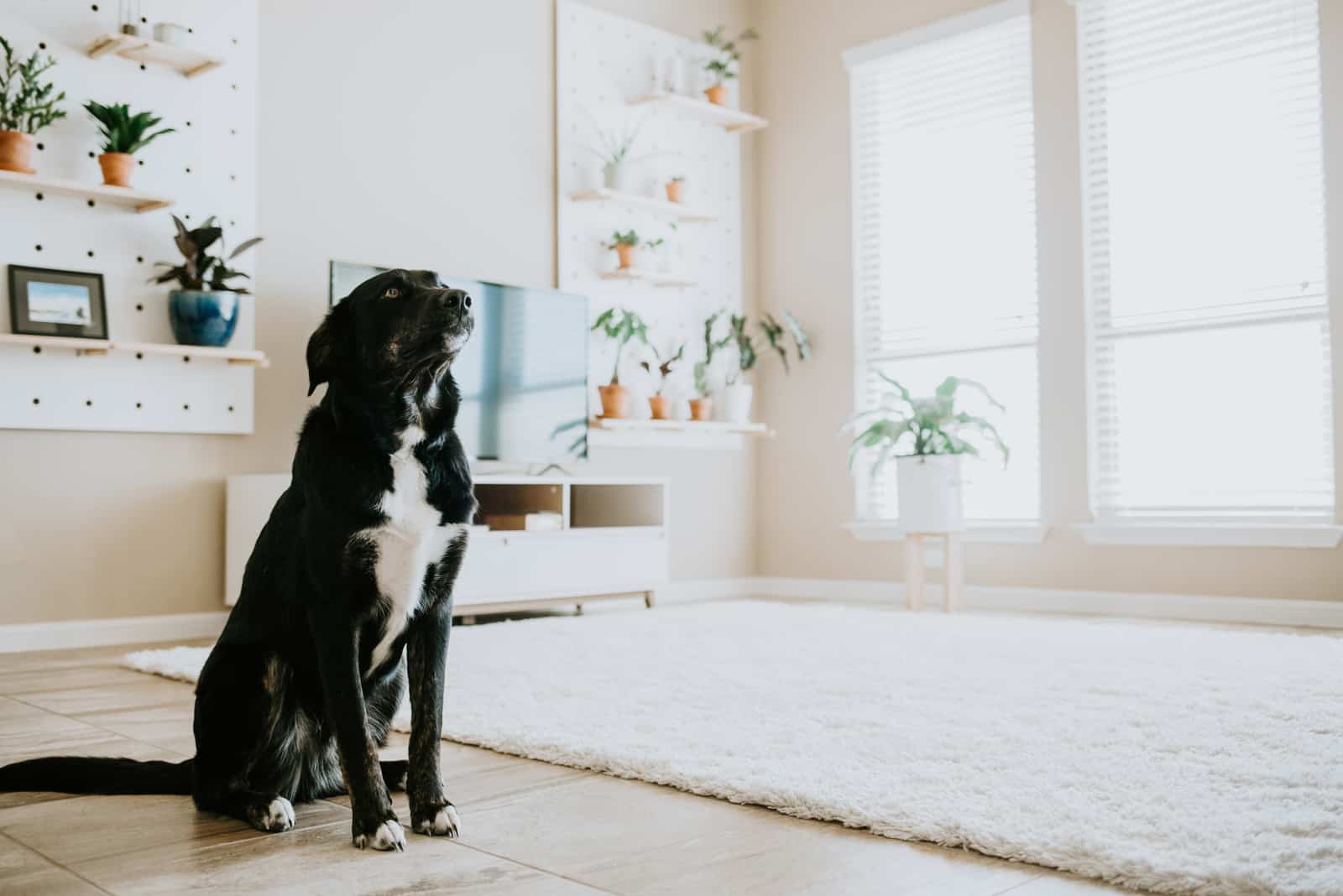
If an Aussie Shepherd sounds like too much of a handful for you, what about a designer dog that mixes the best of this herding breed with the trusty and affectionate Labrador?
The result is a fun-loving, devoted, and smart pooch that you’re certain to fall in love with.
As with all designer dogs, you won’t know exactly what it’s like until your pup is full grown. It might favor one side more than the other, but you’re guaranteed a wonderful, loving, smart, and loyal best friend.
They’ll need a good-sized area in which to exercise and play, so they will be better suited in a country area, although you can get by in a town provided you have plenty of parks nearby.
Be ready to provide plenty of stimulation, as this will be an exceptionally intelligent dog. And, if you want a jogging buddy, this is the dog for you!
These are pretty good dogs for new owners as they aren’t as highly-strung as the pure Aussie. They’re also great with kids, other pets, and strangers, although socialization is still important as you won’t know exactly how much of the Aussies’ natural instincts will show.
You’ll have a medium-sized dog that weighs between 40 and 65 pounds, measuring between 21.5 and 24.5 inches at the shoulder (slightly larger than the average Aussie Shepherd).
As for coat color, who knows? There’s a good chance that there’ll be a black pup in the litter, but the Aussies’ rainbow of coat colors will produce a real mix!
Black Australian Shepherd Price
A cute Aussie puppy is probably going to cost you somewhere between $1,000 and $2,000, although prices can reach around $3,000.
As always, the price will vary according to where you are located, the reputation of the breeder, the sex of your pup, and local demand.
You might pay more for particular colors, but don’t be fooled by unscrupulous breeders who play on words like ‘rare’ to inflate their prices. Do your homework before you buy. Check out the breeder’s website, online reviews, Facebook page, and so on. Get word-of-mouth recommendations if possible, and never go ahead unless you are satisfied that the breeder is reputable and above-board.
Far too many dog lovers have been caught out by puppy mills and scams, especially in the last year when demand for pets was boosted because of the situation with Covid-19.
If you choose wisely, you’ll get a healthy, purebred dog that will live for around 12 to 15 years, maybe longer. If not, then you’ll have a sickly dog with a shorter lifespan, and a hefty vet bill to go with it.
A Few Last Words
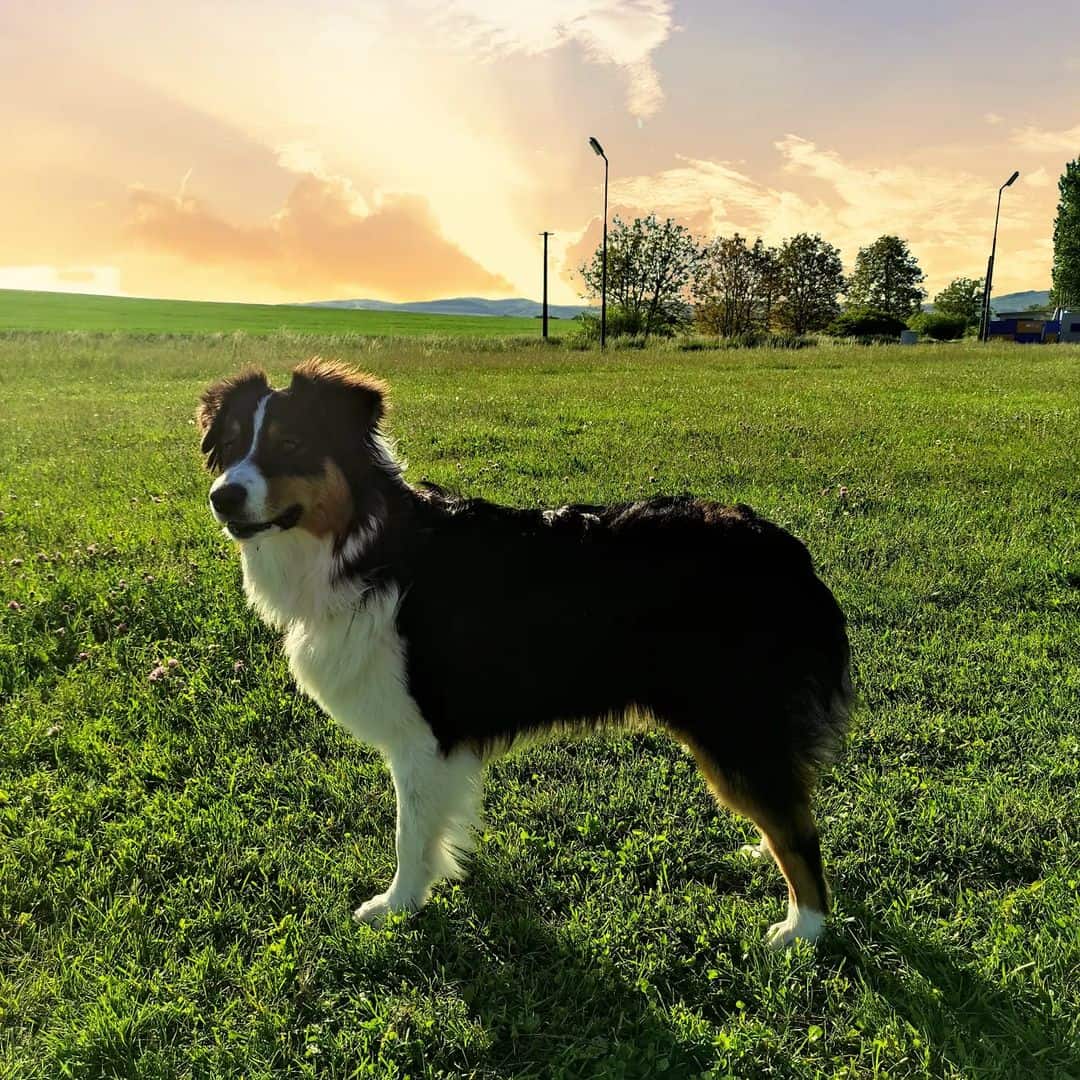
Photo from: @black_rose_australian_shepherd
Like all working dogs, this one takes some work to adapt to being a family pet. But, if you put in the effort, it is totally worthwhile.
If you have your heart set on a pure black Australian Shepherd puppy, you should be prepared for a wait. Predicting a solid color of any type is difficult, and breeders won’t usually aim to produce a particular color. The best thing is to speak to a reputable breeder for advice, as they will be able to let you know what the chances are, or at least direct you to another breeder who can help you.
One other way to get around this, if you are not too fussy about having a purebred dog, is to find an Aussie Labrador mix, as the breeder may well have black ones in the litter. The added bonus is that the pup will have Lab genes. If these are dominant, your dog will be even softer, more playful and affectionate, and may lack the willfulness of the Aussie Shepherd.
The trouble with designer dogs is that you never really know until they are fully grown! Even so, this will be one amazing doggy friend.
The main thing to remember is that keeping any dog is a big responsibility. The Australian Shepherd needs a lot of care and attention, and it’s up to you to provide this. You must commit to giving him regular exercise and mental stimulation, and proper training and socialization are essential.
Aussie Shepherds are very sensitive, and don’t like being left alone. You should certainly avoid leaving them in the house by themselves for more than four hours at a time. If you do leave them home alone, wear them out by taking them for a long walk beforehand. Get someone to drop by and sit with them for a while, or use a dog walking service to get them out of the house for a while.
You’ll also need to groom your pup at least once a week to stop hair from getting everywhere, and you must clean its ears to reduce the risk of infections. Give its teeth a good brush ideally once a day to keep them strong and healthy.
Finally, always use good-quality dog food to ensure that your pup gets all the nutrition it needs to develop properly and live a long and healthy life.
If you can do all this, then you’ll have one very happy dog!
Read Next: Aksaray Malaklisi Dog Breed Facts: Meet Amazing Guardian Dog















